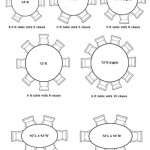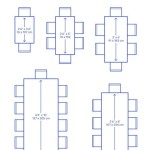What Is The Use Of The "Table" Keyword?
In the realm of computer programming, the notion of data organization and retrieval plays a crucial role. Databases, designed to store and manage vast amounts of information, rely on various structures to achieve this effectively. One such structure, often encountered in database management systems (DBMS), is the "table." The "table" keyword, frequently employed in SQL (Structured Query Language), serves as a fundamental building block for defining and manipulating data within databases. This article delves into the significance of the "table" keyword, exploring its role in database design and the operations it enables.
Defining The Foundation: The "Table" Keyword
The "table" keyword, within the context of SQL, represents the core data structure utilized in relational databases. A table can be envisioned as a collection of rows and columns, much like a spreadsheet. Each row corresponds to a single record, representing a specific entity or instance. Columns, on the other hand, define the attributes or characteristics of the entity. For instance, a table named "Customers" could contain rows representing individual customers and columns for their name, address, phone number, and other relevant information.
The "table" keyword is employed during the creation of tables in a database. Consider the following SQL statement:
```sql CREATE TABLE Customers ( CustomerID INT PRIMARY KEY, FirstName VARCHAR(255), LastName VARCHAR(255), Address VARCHAR(255), PhoneNumber VARCHAR(20) ); ```This statement utilizes the "CREATE TABLE" command to establish a table named "Customers." The table definition includes columns such as "CustomerID," "FirstName," "LastName," "Address," and "PhoneNumber," each with a specific data type to accommodate the appropriate data. The "PRIMARY KEY" constraint on "CustomerID" ensures that each customer has a unique identifier, preventing duplicates.
Manipulating Data: The Power of "Table"
Beyond its role in table creation, the "table" keyword is instrumental in performing various operations on the data stored within tables. SQL provides a rich set of commands that interact with tables, allowing users to:
- Insert data: The "INSERT INTO" statement is used to add new rows (records) to a table. For example, to add a new customer to the "Customers" table, the following statement could be used:
- Retrieve data: The "SELECT" statement enables users to extract information from tables based on specific criteria. For instance, to retrieve all customers from the "Customers" table, the following statement can be executed:
To retrieve only specific columns, the "SELECT" statement can be modified to list the desired columns:
```sql SELECT FirstName, LastName, PhoneNumber FROM Customers; ```- Update data: The "UPDATE" statement allows modifications to existing data within a table. For example, to update the phone number of a customer with a specific ID:
- Delete data: The "DELETE" statement removes records from a table. To remove a customer with a specific ID, the following statement could be used:
Organizing Data: The Importance of Tables
The "table" keyword's significance extends beyond mere data handling. Tables provide a structured framework for organizing information, enabling efficient data management and retrieval. The relational database model, built around the concept of tables, offers several advantages:
- Data integrity: The use of primary keys and foreign keys, along with various constraints, ensures the consistency and accuracy of data within a relational database. These constraints help prevent data duplication, maintain relationships between tables, and enforce data integrity.
- Data relationships: Tables can be linked to one another through foreign keys, establishing relationships between different entities. This allows for the representation of complex data models and the retrieval of related information across multiple tables.
- Data normalization: Tables can be structured to minimize data redundancy, reducing storage requirements and improving data consistency. This process, known as normalization, involves breaking down complex data into smaller, more manageable tables.
In conclusion, the "table" keyword is a fundamental concept in relational databases, playing a crucial role in data definition, manipulation, and organization. Its use underpins the structure and functionality of relational database management systems, enabling efficient data storage, retrieval, and management for a wide range of applications.

Page Design Other Uses For Tables

Tips On Effective Use Of Tables And Figures In Research Papers Editage Insights

5 Reasons To Use An Excel Table As The Source Of A Pivot
Ten Reasons To Use Tables In Excel Chris Menard Training

Tables Graphs In The Real World Uses Examples Lesson Study Com

What To Consider When Creating Tables

Funding Sources And Uses Table Explained Sba Loan Speritas Capital

Charts Vs Tables Or When To Use One Over The Other

Table Of Content What Is A Definition Types Uses

This Awesome Periodic Table Shows How We Use The Elements Digital Trends
Related Posts








